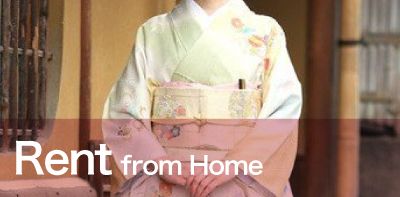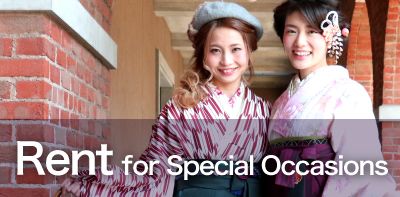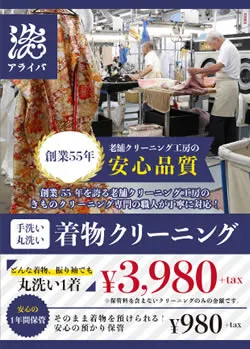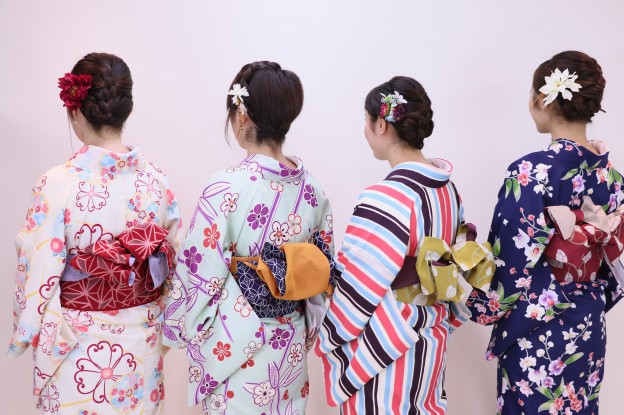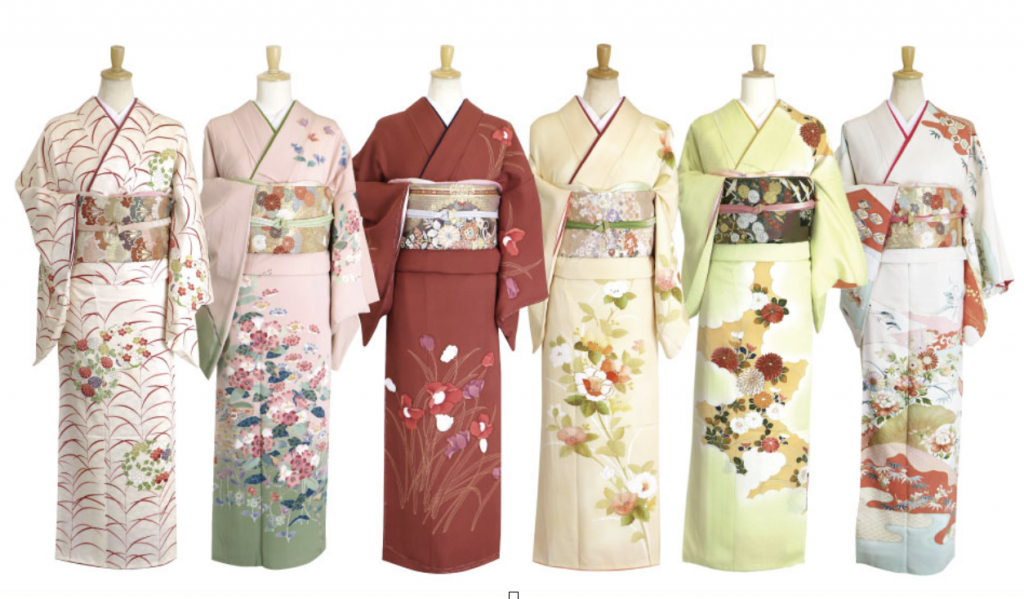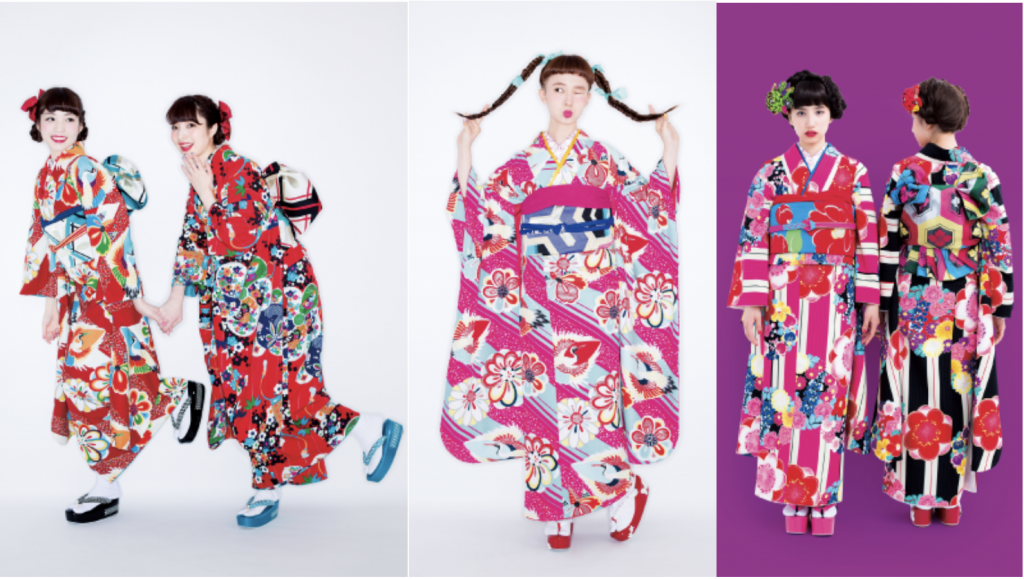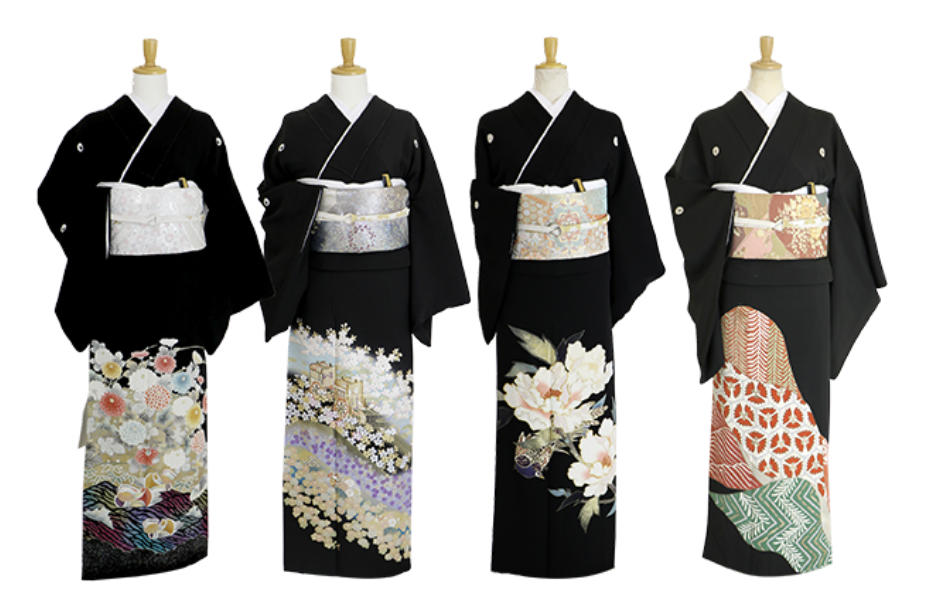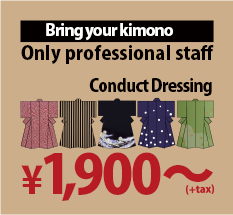What is kimono? Do you want to know more about kimono?
.
.
.
I guess that maybe most of you have ever heard or have an image about kimono. Kimono is one of Japanese traditional garment for woman and men, with no age restriction. Even though in the past Kimono is commonly be worn as a daily clothes so does in many special event, nowadays there’s only some of Japanese people who still tend to wear kimono in their free days, or they just wear it in a special occasion like wedding ceremony, the day of coming age ceremony, graduation, tea party, etc.
The word “kimono”, actually means a “thing to wear” (着 ki “wear” and 物 mono “thing”). But this word covered much more than that. The kimono that we know is, actually consist of many kind of kimono variation and each of them have different specification and level too. Now I would like to know you 6 type of different kimonos and explain the features each of them. Let’s get deeper into kimono’s world ! ^^
.
.
.
Houmongi
訪問着(ほうもんぎ)
訪問(call , visit)着(wear)
https://kyotokimono-rental.com/homongi
Houmongi is what you often called an evening dress in Western. The word houmongi itself literally translates as “visiting wear”. This formal clothes can be wear by unmarried or married woman. Usually, people wear houmongi in a special occasions like when attending a wedding ceremony, party, special event in workplace, tea party, recital music or concert, seminar, kabuki playing, etc. For wedding ceremony, houmongi only can be worn by friends of the bride and not for family or close relative’s wedding party.
In a glance, this kimono looks alike with irotomesode, but one of the specification is that the pattern is not stopped only in the hem parts, but also flow in shoulders, seams and sleeves. The patterns always attractive and elegant, showing the expensive value and finest quality of this high level garment.
If furisode is given by parents to their daughter in the day of coming age ceremony (成人の日 ; seijin no hi) as a sign of “becoming adult”, houmongi is a sign of “start of a new life” and given to their daughter as a wedding present. Houmongi is one of the most high level clothes after tomesode.
.
.
.
Furisode
振袖 (ふりそで)
振り(wave, swinging)袖 (sleeve)
https://kyotokimono-rental.com/seijin
Furisode often refers to kimono with long sleeves and become the most high level clothes to unmarried women. The motifs is flashy, colourful and showing the youthful energy and beauty. On the Coming Age Day ceremony (成人式; seijin shiki), many girls are gonna wear this kimono complete with fur accessories on their shoulders, full with make up and gaudy hairstyle. The other occasion to wear furisode is when attending a wedding ceremony, as a bridesmaids or a guest, and many others.
Furisode can be named after their sleeves lengths. From the longest to the shortest one, called dai-furisode, chu-furisode, and ko-furisode. The longer the sleeves, the more prestige the furisode will be. There’s also furisode with the lengths of it sleeves reach 114-124cm or near the ankles.
When a person in Japan reach the age of 20 years old, Japanese people believe that the person has become an adult who be able to decide on their own and ready to enter the society. To them who will participate in the Seijin Shiki, (especially girls) will be given a furisode as present from their parents. The other options are to rent the furisode, or just attending the ceremony with formal clothes. It’s because the price of furisode are so expensive, sometimes reach 10.000$ above and the rent only has spent about 1500$. This culture is popular among foreigners, and many of them pay a visit to shrine or temple just to feel the sensation and wait until the ceremony end.
.
.
.
Tomesode
留めそで (とめそで)
留 (halt, stop) 袖 (sleeve)
https://kyotokimono-rental.com/kurotomesode
https://kyotokimono-rental.com/irotomesode
Tomesode is consist of two, the black coloured one called kurotomesode, and the coloured one called irotomesode. The most specific way to distinguish this kimono is that the pattern only below the waistline. The other features is the crest that it numbers show the level of kimono and the person who wear it.
Kurotomesode is the most high level clothes for a married woman. It says that this kimono only be worn several times and only in the most special occasion, for example a mother of the bride or groom wearing it in the wedding ceremony. There are 5 crest printed on this kimono, one in the back symbolise their ancestor, two in front chest for parents and two in the sleeves part for siblings / close relatives.
A little bit different with kurotomesode, irotomesode can be worn by married or unmarried woman. Almost like houmongi, this kimono has a same role as evening dress in Western culture but without time restriction and can be worn in various occasions (depend on the number of the crest). As the most high level clothes above the houmongi, irotomesode is worn when attending a wedding ceremony of their own family or close relatives.
.
.
.
Yukata
浴衣 (ゆかた)
浴(bath ) 衣 (clothes)
https://kyotokimono-rental.com/en/yukata
Yukata is the most casual unlined kimono-like garment, usually made of cotton, linen, or hemp for summer use. Back in the past, yukata is clothe that only be worn for Japanese people with high status after they have taken a bath. That’s why the yukata word itself literally can be translated into “clothes for bath”. Nowadays, everyone can wear yukata in many informal occasion like outdoor festival, watching fireworks display or just strolling in town, by men and women of all ages. Yukawa are also worn at onsen or ryokan (hot spring resorts), where they are often provided for the guests in the resort’s own special pattern.
Things that make yukata is rather different with kimono are the nagajuban (kimono inner) that worn inside. Yukata can be worn directly to our skin, right after taking a bath, and also when taking a rest or sleep which can’t be done when wearing a kimono. People on yukata wear geta, a Japanese traditional wooden sandal, while they wear zaori that made of many materials including cloth, leather, vinyl and woven grass when wearing the other type of kimono.
.
.
.
Hakama
袴 (はかま)
https://kyotokimono-rental.com/sotsugyou
Hakama are traditionally worn by men but contemporarily changing and now also worn by women in some occasions. The bottom part is a divided or undivided skirt which resembles a wide pair of trousers, while the top are called ni-shoku-sode, which also a ko-furisode. Hakama typically pleated and fastened by ribbons, tied around the waist over the obi.
Hakama are often worn by Japanese women at college graduation ceremony, and red vivid coloured one worn by Miko on Shinto shrines. Depending on the pattern and material, hakama can range from very formal to visiting wear.
.
.
.
So how do you think about these kimono varieties? Kindly ask us anything or stay to our blog for more information about kimono and japanese culture ! Thanks for visiting Kimono Rental #Wargo blog site! (o^▽^o)



